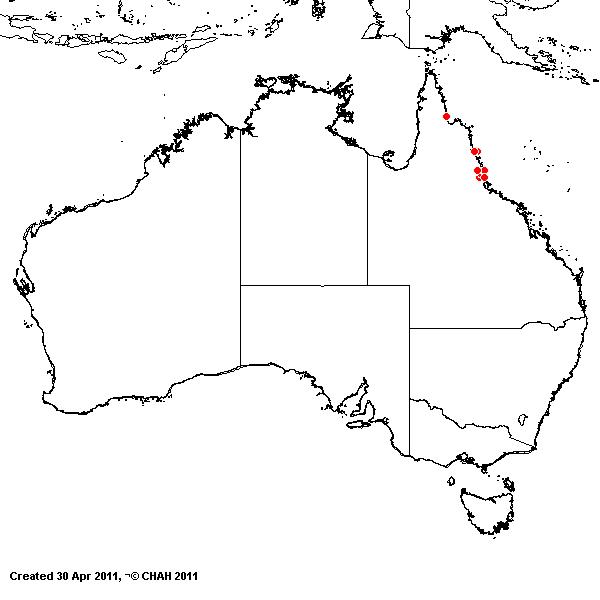Lophatherum gracile Brongn. Duperrey Bot. Voy. Coq. 2 (2): 50 (1831).
Classification. (GPWG 2001) : Subfamily Centothecoideae. Tribe Centotheceae.
Type of Basionym or Protologue Information: Moluccas, Amboina: Brongniart .
Key references (books and floras): [1969] E.E.Henty, Manual Grasses New Guinea (124), [2002] D.Sharp & B.K.Simon, AusGrass, Grasses of Australia.
Habit. Perennial. Culms 45–100 cm tall. Ligule an eciliate membrane. Leaf-blades lanceolate, flat, 8–20 cm long, 14–50 mm wide.
Inflorescence. Inflorescence compound, a panicle of racemes. Racemes 3–25 cm long. Central inflorescence axis 5–30 cm long.
Spikelets. Spikelets sessile. Fertile spikelets many flowered, with at least 2 fertile florets, comprising 1 fertile floret(s), with diminished florets at the apex, lanceolate, laterally compressed, 5.6–9 mm long.
Glumes. Glumes similar, similar to fertile lemma in texture. Lower glume oblong, herbaceous, keeled, 1-keeled, 5 -nerved. Lower glume surface glabrous or indumented. Lower glume apex muticous. Upper glume oblong, 4.4–5.5 mm long, herbaceous, keeled, 1-keeled, 5 -nerved. Upper glume surface glabrous or indumented.
Florets. Fertile lemma 5.3–6.5 mm long, keeled, 7–13 -nerved. Lemma apex awned, 1 -awned. Median (principal) awn 1–1.5 mm long overall. Palea 2 -nerved. Palea apex dentate. Lodicules present. Anthers 2.
Continental Distribution: Temperate Asia, Tropical Asia, Australasia, and Pacific.
Australian Distribution: Queensland.
Queensland: Cook.
Notes. In northern Qld. NE Himalaya, Burma, Malaya, Sri Lanka, China, Japan, Australia. A forest grass, usually collected on the edge of swamps or in seasonally swampy sites. Flowers June, Aug.-Oct.

